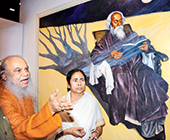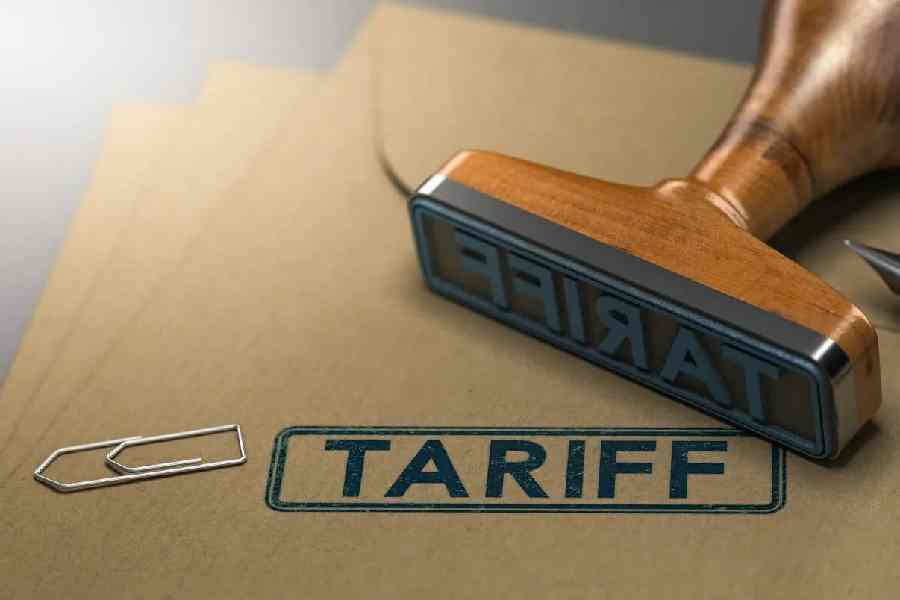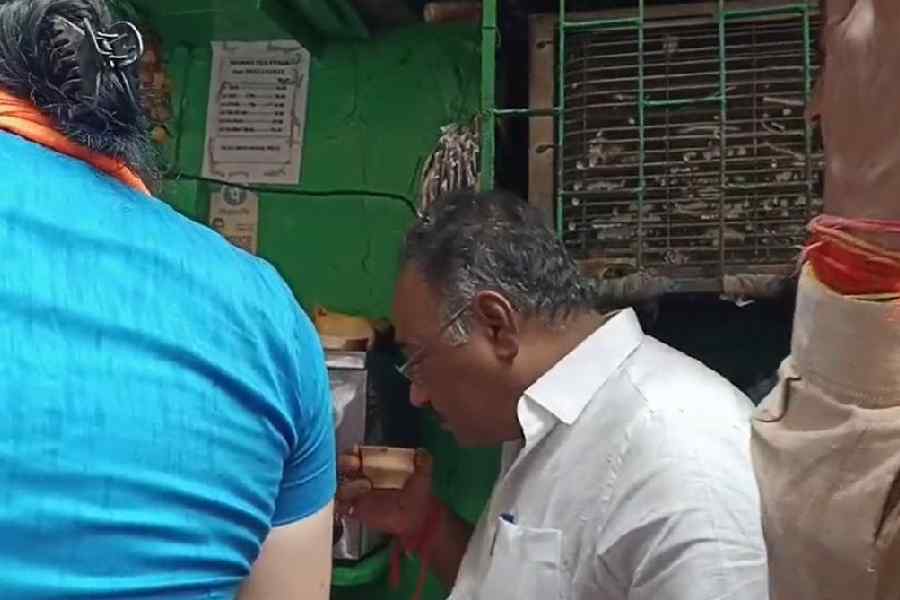 |
| Anish Kapoor’s Cloud Gate sculpture in Chicago |
It looked like any other government office meeting at first, but turned out to be quite exceptional. People associated with museums, buildings or institutions in the state, which need renovation or are worthy of preservation, were being encouraged to apply for funds by the Union ministry of culture.
“The existing scheme for financial assistance to museums has hardly been availed of by an institution from the state except the state government,” said culture secretary Jawhar Sircar. This despite the fact that many of the these are in desperate need of money or repair — and funds up to Rs 2.5 crore are available for an institution!
So it is application time now. Bali Granthagar, Acharya Bhavan, Federation Hall, the residence of Jadunath Sarkar, where the Centre for Studies in Social Sciences was located earlier, the residence of Bankim Chandra Chatterjee, Anandaniketan in Bagnan, Asutosh Museum in Calcutta University, museums in Bishnupur, Baruipur, Malda, Raiganj — several are in the queue.
No deserving place will be turned away, promises Sircar. The funds will be allocated according to requirement. Though he reminds: “Rs 2.5 crore is a lot of money for a museum.”
To facilitate preservation of heritage, the ministry will hold a month-long training on conservation of paintings in the city, with the help of the Lucknow-based National Research Laboratory For Conservation Of Cultural Property, from August 18. Long live heritage.
Wall within the mind
 |
| A still from Wagah by Supriyo Sen |
Wagah, a 13-minute documentary film by Supriyo Sen that won the Berlin Today Award 2009, was screened at Studio 21 at Dover Terrace on July 25. Sen’s earlier documentaries such as Way Back Home and Hope Dies Last In War dealt with the Partition. Wagah is the third film in this series.
The Berlin Film Festival had invited films on the idea of the “wall” to celebrate the 20th anniversary of the fall of the Berlin Wall. Sen’s documentary was one of five chosen from 200 entries.
“The protagonists of my film are three youngsters selling DVDs at the Wagah border who realise what boundaries are from the words and actions of the border guards. I wanted to show the point of view of children,” he says.
Sen feels that making documentary films is not easy. He said while interest in documentaries is growing, funds don’t pour in and shorts cannot be shown to a large audience, unlike commercial releases.
Inspired by a crow
 |
The Bengali obsession with Sukumar Ray seems to be growing by the day. After the sighting of cakes in the shape of Sukumar’s creatures, news came in of an event featuring his “nonsense verse”. Asthaee, a centre for recitation and audio drama, organised an evening on Ray’s poetry rendered by children. It also featured the reading of a play and poetry of other authors by grown-ups on the theme of Barsha (the rainy season).
Then comes news of a magazine called Drighanchu, for which a “wholesome JU branch” claims responsibility. The bilingual magazine, in Bengali and English, can be called a tribute to the great humourist, the creator of Drighanchu, the mysterious crow (picture left) who caws and flies off, leaving behind a huge discourse on what the sound meant. There are several references elsewhere to Ray.
The magazine is, more importantly, about comic book art or its new-age avatar, graphic story-telling. It makes a few pertinent observations. As the introduction points out, the city in the summer of 2009 “overbearingly resembled a comic book”. “Panels, mainly rectangular of varied proportions made of paper, textiles or polymer were strewn across the city, not advertising consumer products but ‘characters’ and ‘collectives’ engaged in a communal circus called the parliamentary elections....These panels consist of faces and figures and sentences resembling rudimentary ‘thought balloons’ used in comic strips.”
Only if the real-life panels made us as happy as comic strips.
Art summit
The second edition of the India Art Summit, in association with Sotheby’s, will kick off at the Pragati Maidan, New Delhi, on August 19. Akar Prakar from Calcutta will be the lone participant from the city at the four-day art fair that promises over 1,000 works worth over Rs 40 crore from 54 galleries, 18 of which are international. Anish Kapoor’s Cloud Gate sculpture in Chicago will be on display.
Akar Prakar will represent senior artists like Ganesh Haloi, Aditya Basak and Chhatrapati Dutta, along with the younger Adip Dutta and Debraj Goswami. The Hindusthan Park gallery will release a book on sculptor Sarbari Roy Chaudhury.
“Many international galleries would like to test the waters here for a few days, especially those from the UK, US and West Asia, vis-a-vis setting up shop,” says Neha Kirpal, associate director, India Art Summit.
The secret of desire
From Feluda’s Charminar to Ray smoking on his pipe, pop culture in Calcutta is chock-a-block with images of heroes, real or fictional, smoking.
Once upon a time, smoking was cool. An 84-year-old woman, an asthma patient admitted to a south Calcutta hospital for three days, was having a chat with her nurse. “I asked her what she had liked about her husband when she married him. She smiled and said ‘anek cigarette kheto (he used to smoke a lot)’,” the nurse said.










